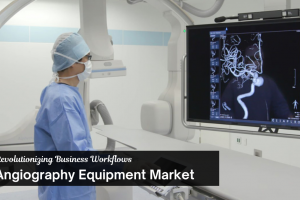The latest market report published by Credence Research, Inc. “Global Venous Thromboembolism (VTE) Treatment Market: Growth, Future Prospects, and Competitive Analysis, 2016 – 2028”. The global venous thromboembolism (VTE) treatment market is projected to grow at a substantial CAGR of 8.9% over the upcoming years. The global Venous Thromboembolism (VTE) Treatment industry was estimated to be worth USD 1.1 billion in 2022 and is expected to be USD 1.99 billion by 2030.
Venous thromboembolism (VTE) treatment market refers to the industry involved in the development, production, and distribution of therapies and interventions for the management and treatment of venous thromboembolism. VTE is a condition characterized by the formation of blood clots (thrombi) in the veins, commonly occurring in the deep veins of the legs (deep vein thrombosis) or as a result of a clot traveling to the lungs (pulmonary embolism).
Market is driven by factors such as the increasing prevalence of VTE, aging populations, lifestyle changes leading to sedentary habits, and the growing awareness about the importance of early diagnosis and treatment. Additionally, advancements in pharmacological therapies, including the introduction of DOACs, have improved treatment options and patient outcomes.
North America led the global venous thromboembolism (VTE) treatment market in terms of revenue share, owing to a high prevalence of VTE, a well-established healthcare infrastructure, advanced medical technology, and a strong focus on R&D operations. Additionally, increased awareness among healthcare professionals and patients about the importance of early treatment and detection of VTE has contributed to the market growth in this region. The presence of major market players and ongoing advancements in VTE treatment options also contribute to regional dominance in the global market.
The global Venous Thromboembolism (VTE) Treatment Market is bifurcated into Product, Type and Geography. Based on Product the market is categorized into Non-Segmented Pneumatic Compression Pumps, Segmented Pneumatic Compression Pumps without Gradient, Segmented Pneumatic Compression Pumps with Calibrated Gradient, Upper Pneumatic Compression Sleeves & Lower Pneumatic Compression Sleeves. Based on Type the market is categorized into Deep Vein Thrombosis, Pulmonary Embolism & Others. Based on geography, the market is categorized as North America, Europe, Asia Pacific, Latin America, and the Middle East and Africa.
Venous Thromboembolism (VTE) Treatment Market Major Challenges are multifaceted and demand immediate attention. One of the significant challenges is the lack of awareness among patients regarding VTE, which often results in delayed diagnosis and treatment. Additionally, managing bleeding risks associated with anticoagulant therapy can be a major challenge for healthcare providers. Drug price volatility and reimbursement issues also pose significant challenges to market growth. Furthermore, the need for personalized medicine has led to various novel treatments that have not yet been widely adopted due to their high cost and limited efficacy data.
The Venous Thromboembolism (VTE) treatment market has been experiencing growth due to various factors:
- Increasing Prevalence of VTE: The prevalence of VTE, which includes conditions like deep vein thrombosis and pulmonary embolism, is rising globally. This is primarily due to an aging population and increasing rates of obesity, both of which are risk factors for VTE.
- Advancements in Diagnosis and Treatment: Improved diagnostic techniques and treatment options have led to increased detection and treatment of VTE. The advent of direct oral anticoagulants (DOACs) has revolutionized VTE management, offering a safer and more convenient alternative to traditional therapies such as warfarin.
- Increased Awareness: There’s been a rise in public and medical community awareness about VTE and its potential complications, contributing to increased diagnosis and treatment.
- Growing Research and Development: The pharmaceutical industry has been investing heavily in R&D for more effective and safer anticoagulant drugs, which could drive market growth.
- Favorable Reimbursement Policies: In many developed countries, favorable insurance and reimbursement policies are making VTE treatment more accessible, which could stimulate market growth.
- Lifestyle Changes: Sedentary lifestyle, unhealthy diet, and increased smoking and alcohol consumption are also contributing to the rise in VTE cases.
Why to Buy This Report-
- The report provides a qualitative as well as quantitative analysis of the global Venous Thromboembolism (VTE) Treatment Market by segments, current trends, drivers, restraints, opportunities, challenges, and market dynamics with the historical period from 2016-2020, the base year- 2021, and the projection period 2022-2028.
- The report includes information on the competitive landscape, such as how the market’s top competitors operate at the global, regional, and country levels.
- In-depth analysis of the global market segmentation on the basis of Product and Type
- Major nations in each region with their import/export statistics
- The global Venous Thromboembolism (VTE) Treatment Market report also includes the analysis of the market at a global, regional, and country-level along with key market trends, major players analysis, market growth strategies, and key application areas.
Browse Full Report: https://www.credenceresearch.com/report/venous-thromboembolism-vte-treatment-market
Visit: https://www.credenceresearch.com/
Related Report: https://www.credenceresearch.com/report/menstrual-cups-market
Related Report: https://www.credenceresearch.com/report/sterile-tube-welder-market-60864
Browse Our Blog: https://www.linkedin.com/pulse/venous-thromboembolism-vte-treatment-market-share-demand-singh







